NEWS: Flood-prone development continues as state gets grip on water issues
NEWS BRIEFS: Eroding tax base, voting machines, education, much more
COMMENTARY, Brack: South Carolina’s role in presidential process is big, really big
SPOTLIGHT: Francis Marion University
MY TURN, E. Brack: Six fundamental principles guided Dr. Martin Luther King’s mission
FEEDBACK: Two readers react to article pushing Democratic rebranding
MYSTERY PHOTO: Lots of pretty lights at night
S.C. ENCYCLOPEDIA: : Gov. Martin F. Ansel
NEWS: Flood-prone development continues as state gets grip on water issues

By Lindsay Street, Statehouse correspondent | A Charleston Democrat plans to file a bill in the next two weeks that conservationists say could be one of the best ways for the state to deal with nagging flooding issues.
The proposed bill would prevent future development in flood-prone areas, such as a 100-year flood plain.
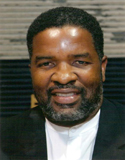
“It will be filed,” S.C. Rep. Wendell Gilliard told Statehouse Report. He added the bill would be filed before the end of the month.
S.C. Environmental Law Project Executive Director Amy Armstrong called the proposal an “easy and seemingly obvious way to prevent future harm from flooding, and keep people and structures safe.”
The bill, still in its draft form, is similar to policy that the city of Charleston is already considering, according to city Chief Resilience Officer Mark Wilbert.
“We do not want to build in flood-prone areas at all. That just doesn’t make sense,” he said. “(But) there are a lot of questions of what that looks like. It’s a lot more complicated than what it appears on the surface … You can’t just wave a magic wand and tell everybody you can’t build here anymore. You have to do your homework.”
Wilbert said any policy must consider property owner rights in addition to the environmental or taxpayer cost.
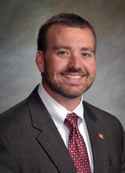
Murrells Inlet Republican Sen. Stephen Goldfinch has filed another bill this year to help flood-prone property owners leave.
“People just shouldn’t be living in the hundred-year flood plain,” Goldfinch said, adding his bill has gained bipartisan support as the state deals with the triple threat of rising sea level, eroding coastlines and extreme precipitation leading to inland flooding.
“From a conservative right position, we continue to (federally) fund people whose homes have been flooded over and over and over again,” he said. “The taxpayers have literally repaired (some homes) five times and, at some point and time, you have to throw up your hands and say it’s not fiscally responsible and it’s almost morally reprehensible.”
Development continues
Meanwhile, development in the floodplain continues in South Carolina. One project that continues to be challenging is for development of Captain Sams Spit, a 175-acre barrier island outside of Charleston.
The S.C. Department of Health and Environmental Control issued permits in 2015 for creating a wall to stabilize a road leading to the barrier island, and water and sewer lines for a 50-home development there. The development has been in a legal tangle for at least a decade.
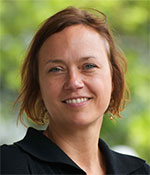
Armstrong, on behalf of the Coastal Conservation League, is challenging those permits. Late last year, an administrative judge stayed the permits while S.C. Environmental Law Project appeals them.
“Our barrier islands are the most vulnerable areas on the coast to storm damage, to flood damage,” Armstrong said. “They are the most susceptible to being overwashed when there are large weather events … (then) who’s left holding the bag to cleanup when those houses are destroyed and fall into the ocean? … It’s putting people and structures in harm’s way.”
Attempts to contact public relations at the developer, Kiawah Partners, were unsuccessful.
Nearby, the city of Charleston was fingered in 2018 for allowing more floodplain development than any other coastal city in the state.
- Weakening dam safety is also a concern for conservationists when it comes to flooding. Read more her
A more statewide view
While Charleston appears poised to shift policy as it takes the lead on many flooding issues in the state, some of its public servants have been tapped for the gubernatorial South Carolina Floodwater Commission.
Late last year, Charleston officials visited the Netherlands, a European country known for being below sea-level and its dykes used to keep its land dry.
“Water there is managed on a regional level,” Wilbert said of the big takeaway from the trip. “The governor’s commission is certainly a step in the right direction to look at this statewide.”
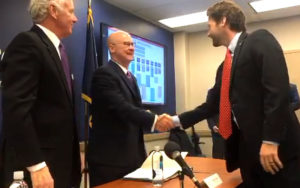
Commission Chairman Tom Mullikin of Camden said the commission is part of the state’s effort to take a holistic strategy to flooding. The commission will have a meeting Feb. 8 at Charlestown Landing State Park in Charleston. In December, the commission identified 10 task forces in its first-ever meeting.
“We are no longer treating extreme weather in South Carolina as an anomaly,” Mullikin said.
With the commission being so new, Mullikin said he cannot speak on any legislation currently, but he added that legislation will be one part of the commission’s future recommendations.
The 2019 session
Conservationists have lauded Goldfinch’s bill that will help homeowners take federal buyouts of their flood-prone property through establishment of a state fund.
“I was standing in knee deep sewage in someone’s house during the last major flood and I started talking to them and they told me what their problem was: They had been flooded twice before this and they wanted to go but they couldn’t get out,” the senator told Statehouse Report.
The Federal Emergency Management Agency offers loans to help homeowners leave flood-prone properties, but it requires a 25 percent match. Goldfinch’s bill would use federal money through a state program to offer a low-interest loan for that match. But the current bill would require local governments to make the application on behalf of a swath of homeowners.
“We are literally reclaiming wetlands where homes used to be,” Goldfinch said of the proposed revolving fund.
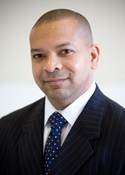
On Wednesday, a Senate subcommittee sent Goldfinch’s S. 259 to full Senate Agriculture and Natural Resources Committee. Chairman Paul Campbell confirmed the bill will be heard next week, but the meeting has not been posted online as of deadline for this publication.
Wilbert said another bill that can help ebb floodwaters in the state is one that allows a local sales tax to be used for floodwater mitigation. S.C. Sen. Marlon Kimpson, D-Charleston, introduced S. 217, which was given a positive report from the Senate Finance Committee this week. That puts the measure on the Senate calendar for a floor vote.
Wilbert said helping municipalities and counties access capital will be important in mitigating the triple-threat of water in the state.
- Have a comment? Send to: feedback@statehousereport.com
NEWS BRIEFS
Eroding tax base, voting machines, education, much more
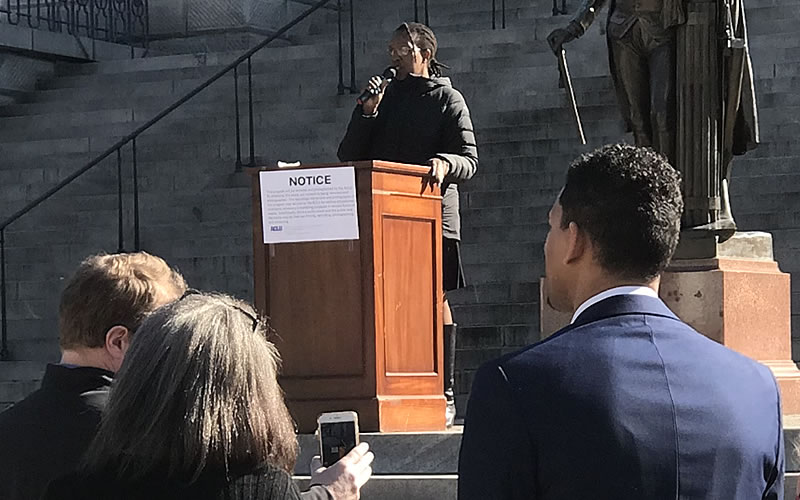
By Lindsay Street, Statehouse correspondent | South Carolina’s population is growing and aging faster than the rest of the nation — and that means a further erosion of the income tax base. Why? More retirees who pay a lower amount of income taxes. That was part of the message given to the Senate Finance Taxation System Review and Reform subcommittee Wednesday in a presentation from the Palmetto Promise Institute and economist Rebecca Gunnlaugsson.
Gunnlaugsson said the fairness of the state’s income tax and sales tax are issues that need to be tackled and can be tackled quickly.
“The number of people who pay income tax has been declining,” she said. She added that only 35 percent of sales are taxable in the state, a number that continues to decline. “As the tax base erodes, what we end up with is higher tax rates.”
Comprehensive tax reform has been listed as one of the priorities for this new session, and it is one of this publication’s Palmetto Priorities, (see below for more these priority updates).
In other news:
Governor’s spending plan. Gov. Henry McMaster issued a proposed state spending plan, which identified education as a top priority, aligning with what the legislature has indicated. The plan included a populist measure of a $200 million rebate to S.C. taxpayers and elimination of income tax for military, veterans, public safety officers and law enforcement in the state. Furthermore, the governor proposed a $2.2 billion-dollar tax cut across all personal income
brackets resulting in an average 15 percent rate reduction. The spending plan also includes a 5 percent teacher raise. In the plan, funding streams for the measures are not specifically identified. The executive budget is largely ceremonial as the state budget always originates in the House, with its final stop being the governor’s desk after a long legislative process.
Child marriages. The Senate Judiciary subcommittee got some international attention Jan. 17 when it considered a bill that would change a 1962 law that allows pregnant, underage girls to marry older men. One analysis tabulated that, over the last two decades, about 7,000 underage girls — as young as 12 — have married older men in South Carolina (Read more). A House subcommittee will address a similar bill on Jan. 24, according to a tweet from S.C. Rep. Beth Bernstein, the House version’s primary sponsor.
Gubernatorial appointments. Gov. Henry McMaster announced this week that Department of Revenue Director Hartley Powell will continue to serve in that position. Powell was installed in the post by then-Gov. Nikki Haley in November 2016.
McMaster also announced this week Maj. Gen. R. Van McCarty will replace retiring Adjutant General, Maj. Gen. Robert E. Livingston Jr. McCarty will become the first Adjutant General appointed by a governor since the constitutional amendment giving him that authority was approved by South Carolina voters in 2014. He currently serves as the Deputy Adjutant General of the South Carolina Military Department under Livingston.
Shutdown in S.C. The partial federal government shutdown has begun affecting South Carolina, from furloughed workers to stymied federal funding streams. Some of the big stories impacting South Carolina this week included early food stamp payments, struggling TSA workers, secured funding for reduced or free school lunches, and a state bill that would offer property tax penalty relief for furloughed workers. Read more about Charleston Democratic Rep. Leon Stavrinakis’ bill here.
Weekly update on Palmetto Priorities
 Throughout the legislative session, we’ll provide you relevant updates related to our list of Palmetto Priorities, 10 big policy areas where major progress is needed for South Carolina to escape the bottom of lots of lists. Over the last week:
Throughout the legislative session, we’ll provide you relevant updates related to our list of Palmetto Priorities, 10 big policy areas where major progress is needed for South Carolina to escape the bottom of lots of lists. Over the last week:
Politics/elections. House budget writers heard Tuesday from the state Election Commission about its request to replace its antiquated electronic voting machines. The cost to replace the 13,000-plus touchscreen machines tallies up to $60 million.
On Wednesday, the American Civil Liberties Union South Carolina took to the Statehouse steps to push for a new voting system. Executive Director Shaundra Young Scott said the organization is backing legislation sponsored by Democratic S.C. Rep. Terry Alexander of Florence.
His bill, H. 3304, would further restrict the type of voting machines the state could use. The bill says the voting system shall be “nonproprietary, publicly owned paper-based system that uses the paper ballot as the ballot of record.” The bill is now in the House Committee on Judiciary.
Scott said the bill and the commission’s effort to buy new voting machines is vital to the state.
“So people can feel their vote counts,” she told Statehouse Report.
- Related: A judge mulls federal intervention on state’s election system.
- Related: New report shows issues with state’s voting system.
Corrections. South Carolina has adopted a program called Restoring Promise that uses mentors and classes to help prevent recidivism in its state prisons. The program was outlined to a Senate committee this week. Corrections officials said the program could also curtail inmate violence and help with retention of prison guards.
Education. House Speaker Jay Lucas, Senate President Harvey Peeler, and Gov. Henry McMaster have asked the director of Revenue and Fiscal Affairs to compile a report on addressing the state’s education funding formula.
“Reforming the education funding formula is a necessary step to ensure more equitable distribution of dollars to South Carolina’s school districts,” McMaster wrote in the letter dated Jan. 17.
The report is due no later than May 9 and must evaluate ways to make funding more efficient.
Looking ahead
Click below for other items coming up in the Statehouse:
Find new bills
- Click here to find all bills introduced in the Senate.
- Have a comment? Send to: feedback@statehousereport.com
BRACK: South Carolina’s role in presidential process is big, really big

By Andy Brack, editor and publisher | South Carolina will again play an outsized role in picking the next presidential candidates for U.S. voters. It’s where the political rubber hits the road.
 In large part, the story is told by the numbers:
In large part, the story is told by the numbers:
Iowa, which holds the first presidential contest every four years, is home to 3.1 million people, 91 percent of whom are white. But its battle, set for Feb. 3, is a caucus of delegates, who are party stalwarts. Participation isn’t ubiquitous.
New Hampshire, which holds the first primary on Feb. 11, is home to 1.3 million people, 94 percent of whom are white. It isn’t a reflection of most of America.
Nevada, an early voting state since 2008, also uses caucuses for its population of 2.8 million, 68 percent of whom are white and 28 percent of whom are of Latino descent. Its caucuses are set for Feb. 22.
South Carolina offers primary elections in which any voter can participate, since voters don’t register by party. It has a population of 5.1 million people, 69 percent of whom are white residents, 27 percent are black and 5.7 percent are of Hispanic background.
Chip Felkel, a moderate Greenville Republican who provides frequent political insight to Canadian television audiences, observed that diversity in South Carolina’s electorate included having a lot of transplants – people who retired here after a business or military career.
“We’re a much better test of different groups and how candidates can appear to different groups,” he said. “We have those groups here. We’re not homogenous like Iowa or New Hampshire.”
 Bottom line: South Carolina is the most important of the four states because it offers all registered voters a chance to participate and its demographics are more diverse than Iowa and New Hampshire. And for candidates, South Carolina is a place where candidates get the best test of their messages.
Bottom line: South Carolina is the most important of the four states because it offers all registered voters a chance to participate and its demographics are more diverse than Iowa and New Hampshire. And for candidates, South Carolina is a place where candidates get the best test of their messages.
“For Dems, we are the first test of African American support, which is hyper-critical for any would-be nominee,” said Winthrop University pollster Scott Huffmon. “For the GOP, we are the first test of the broad swaths of conservatism. We have large contingents of everything from evangelicals to libertarian-leaning, small-government folks to business Republicans needed to secure the nomination and possibly the White House.”
College of Charleston professor Gibbs Knotts, who plans on publishing a book about South Carolina’s critical role in the presidential process later this year with colleague Jordan Ragusa, agreed with Huffmon’s observation about the importance of South Carolina’s diversity in the Democratic primary.
![]() “The Republican primary is important because the electorate is very representative of the national Republican electorate,” he added. “We argue that this ‘representativeness’ is the reason that S.C. Republicans have correctly selected the GOP winner in all contests but 2012.”
“The Republican primary is important because the electorate is very representative of the national Republican electorate,” he added. “We argue that this ‘representativeness’ is the reason that S.C. Republicans have correctly selected the GOP winner in all contests but 2012.”
Noted Charleston chef and author Nathalie Dupree, who holds frequent dinner parties where talk often turns to politics, added, “We are important to the Republicans as we are conservative and they can gauge the rest of the country by our response.”
There have been news reports that the S.C. GOP, which continues to tout its First in the South primary online, may not have a 2020 primary. But inquiries to the party for an update went unanswered.
Meanwhile, South Carolina Democrats are preparing for an onslaught of candidates coming to the state in the next year.
![]() “The state’s Democrats have thinned out the field before Super Tuesdays in recent primaries, lifting Barack Obama in 2008 and Hillary Clinton in 2016,” Columbia public relations consultant Bud Ferillo observed. Super Tuesday in 2020 is March 3, three days after the S.C. primary.
“The state’s Democrats have thinned out the field before Super Tuesdays in recent primaries, lifting Barack Obama in 2008 and Hillary Clinton in 2016,” Columbia public relations consultant Bud Ferillo observed. Super Tuesday in 2020 is March 3, three days after the S.C. primary.
Furman University political scientist Danielle Vinson observed that the South Carolina Democratic Party’s presidential primary will test progressives more than moderates because the state is generally more moderate.
“Although we typically don’t see Southern states as particularly important to Democrats when the general election comes around, I think the close races we saw in Georgia and North Carolina put some of the Southern states in play — but only if Democrats figure out how to talk to moderates.
“South Carolina gives them an opportunity to practice. And as they should have learned from 2016, they can’t take any state for granted.”
- Have a comment? Send to: feedback@statehousereport.com.
SPOTLIGHT: Francis Marion University
The public spiritedness of our underwriters allows us to bring Statehouse Report to you at no cost.
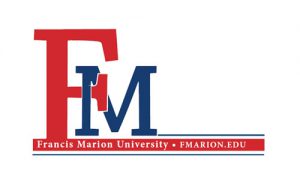 We’re happy this week to shine our spotlight on Francis Marion University, a public university located in Florence, S.C. It was founded in 1970 with a mission to provide the people of the Pee Dee, and of South Carolina, with high quality, yet accessible, university education. FMU has stayed true to that mission for nearly 50 years. In any given year, more than 95 percent of the university’s students are South Carolinians, and FMU is, by most measures, the most affordable college in the state.
We’re happy this week to shine our spotlight on Francis Marion University, a public university located in Florence, S.C. It was founded in 1970 with a mission to provide the people of the Pee Dee, and of South Carolina, with high quality, yet accessible, university education. FMU has stayed true to that mission for nearly 50 years. In any given year, more than 95 percent of the university’s students are South Carolinians, and FMU is, by most measures, the most affordable college in the state.
Francis Marion University is, of course, named for Revolutionary War hero, General Francis Marion, who was nicknamed “The Swamp Fox” for his uncanny ability to use terrain, local knowledge and just plain old South Carolina common sense to outfox the British. Today, FMU prides itself on providing a strong liberal arts education for its 4,000 students, while at the same preparing them for careers in a broad range of fields.
The University offers professional schools in health care, education and business, as well as graduate programs in business, education and psychology. FMU’s new School of Health Sciences is adding new programs, designed to help deliver critical medical services to the community, on an almost annual basis, so great is the demand by students and the need in our region and state. Recent undergraduate additions to the University as a whole include Health Care Management and Industrial Engineering. The latter, just begin in 2014, is already one of the fastest-growing majors on campus.
The campus is situated on over 400 wooded acres of beautiful foliage and landscaping. A significant campus presence in historic downtown Florence is also developing. FMU’s Performing Arts Center is located there along with the Carter Center for Health Sciences, and the FMU Recording Studio, The University recently acquired more downtown property near the Carter Center, which will help support future academic expansions.
FMU has managed to grow while at the same time providing South Carolinians with, as noted, an affordable university education. FMU’s total net cost — tuition plus room, board and other fees, less scholarships and grants awarded — is South Carolina’s lowest, and by a considerable margin, according to calculations performed by a third party, CollegeFactual.com. FMU has managed this unusual balance of quality and affordability by avoiding capital debt, minding administrative costs carefully, and developing a culture of giving among its many friends and supporters in the Pee Dee and beyond.
- To learn more about Francis Marion, visit online at fmarion.edu
MY TURN: Six fundamental principles guided Dr. Martin Luther King’s mission

By Elliott Brack, special to Statehouse Report | As we move to observe Martin Luther King Day on Monday, it’s fitting to review the King Philosophy. Dr. King viewed three evils, that of poverty, racism and militarism that he said formed a vicious cycle. He felt these were intertwined and were barriers for reaching his nirvana, what he called the “Beloved Community.”
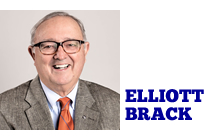 Let’s look at his thoughts in this area, this taken from his view as recorded at The King Center in Atlanta and available on the Internet.
Let’s look at his thoughts in this area, this taken from his view as recorded at The King Center in Atlanta and available on the Internet.
Fundamental tenets of Dr. King’s philosophy of nonviolence are described in his first book, Stride Toward Freedom. The six principles include:
PRINCIPLE ONE: Nonviolence is a way of life for courageous people. It is active nonviolent resistance to evil. It is aggressive spiritually, mentally and emotionally.
PRINCIPLE TWO: Nonviolence seeks to win friendship and understanding. The end result of nonviolence is redemption and reconciliation. The purpose of nonviolence is the creation of the Beloved Community.
PRINCIPLE THREE: Nonviolence seeks to defeat injustice, not people. Nonviolence recognizes that evildoers are also victims and are not evil people. The nonviolent resister seeks to defeat evil not people.
PRINCIPLE FOUR: Nonviolence holds that suffering can educate and transform. Nonviolence accepts suffering without retaliation. Unearned suffering is redemptive and has tremendous educational and transforming possibilities.
PRINCIPLE FIVE: Nonviolence chooses love instead of hate. Nonviolence resists violence of the spirit as well as the body. Nonviolent love is spontaneous, unmotivated, unselfish and creative.
PRINCIPLE SIX: Nonviolence believes that the universe is on the side of justice. The nonviolent resister has deep faith that justice will eventually win. Nonviolence believes that God is a God of justice.
Once stating his principles, Dr. King then went forward with six steps to achieve non-violent social change.
- INFORMATION GATHERING: To understand and articulate an issue, problem or injustice facing a person, community, or institution you must do research. You must investigate and gather all vital information from all sides of the argument or issue so as to increase your understanding of the problem. You must become an expert on your opponent’s position.
- EDUCATION: It is essential to inform others, including your opposition, about your issue. This minimizes misunderstandings and gains you support and sympathy.
- PERSONAL COMMITMENT: Daily check and affirm your faith in the philosophy and methods of nonviolence. Eliminate hidden motives and prepare yourself to accept suffering, if necessary, in your work for justice.
- DISCUSSION/NEGOTIATION: Using grace, humor and intelligence, confront the other party with a list of injustices and a plan for addressing and resolving these injustices. Look for what is positive in every action and statement the opposition makes. Do not seek to humiliate the opponent but to call forth the good in the opponent.
- DIRECT ACTION: These are actions taken when the opponent is unwilling to enter into, or remain in, discussion/negotiation. These actions impose a “creative tension” into the conflict, supplying moral pressure on your opponent to work with you in resolving the injustice.
- RECONCILIATION: Nonviolence seeks friendship and understanding with the opponent. Nonviolence does not seek to defeat the opponent. Nonviolence is directed against evil systems, forces, oppressive policies, unjust acts, but not against persons. Through reasoned compromise, both sides resolve the injustice with a plan of action. Each act of reconciliation is one step closer to the ‘Beloved Community.’
Martin Luther King, 1929-1968: Thank you for these words and this guidance.
Longtime Georgia newsman Elliott Brack is editor and publisher of Gwinnett Forum, a sister publication.
- Have a comment? Send to: feedback@statehousereport.com..
FEEDBACK
FEEDBACK: Two readers react to article pushing Democratic rebranding
To the editor:
![]() Great article and a call to the Democratic Party to figure out how to sell themselves …honestly!
Great article and a call to the Democratic Party to figure out how to sell themselves …honestly!
— Catherine LaFond, Charleston, S.C.
To the editor:
Democrats have abandoned their old base (trade unions and the day-to-day workers) and instead focus their efforts on special interests ( LGBTQXYZ lobby, teacher unions and illegal immigrants, aka future voters).
— Phil Tackett, Summerville, S.C.
Send us your thoughts … or rants
We love hearing from our readers and encourage you to share your opinions. But you’ve got to provide us with contact information so we can verify your letters. Letters to the editor are published weekly. We reserve the right to edit for length and clarity. Comments are limited to 250 words or less. Please include your name and contact information.
- Send your letters or comments to: feedback@statehousereport.com
MYSTERY PHOTO: Lots of pretty lights at night

Full disclosure: This mystery isn’t in South Carolina. So where is it? (Hint: It’s in the American South.) Send your guess to feedback@statehousereport.com. And don’t forget to include your name and the town in which you live.
Our previous Mystery Photo
 Our Jan. 11 mystery, “Beautiful sunset,” was exactly where you thought it was – even if you didn’t guess it. The photo, taken by Charleston-area photographer Josh Corrigan, showed a beautiful silhouette of the lighthouse on Sullivan’s Island. Thanks to Ellis Creek Photography for providing the image.
Our Jan. 11 mystery, “Beautiful sunset,” was exactly where you thought it was – even if you didn’t guess it. The photo, taken by Charleston-area photographer Josh Corrigan, showed a beautiful silhouette of the lighthouse on Sullivan’s Island. Thanks to Ellis Creek Photography for providing the image.
Congratulations to all who correctly identified the location of Corrigan’s photo: Daniel Prohaska of Moncks Corner; David Lupo of Mount Pleasant; Charles Davis of Aiken; Frank Bouknight of Summerville; Steve Willis of Lancaster; Ronald Pantane of Spartanburg; Donna McGreevy and Jay Altman, both of Columbia; Addison Ingle of Charleston; George Graf of Palmyra, Va.; Harvey Shackelford of Newberry; Larry Cannon of Simpsonville; Wayne Beam of North Myrtle Beach; Philip Cromer of Beaufort; Bill Segars of Hartsville; and Martha Gunter of Sullivan’s island.
Graf provide more of the story about the lighthouse: “According to us-lighthouses.com, construction of this new lighthouse had begun in 1960 on the northern side of the Charleston harbor. As the federal government had established a lifesaving station on the island in 1895, it was decided to use that location for the lighthouse.
“To help the new lighthouse stand strong against hurricane force winds, it was given a unique triangular shape, capable of withstanding 125-mph winds, by its architect, Jack Graham of the U.S. Coast Guard. After the design, Jack Graham left the Coast Guard, and never knew that his design was used in the construction of the lighthouse, until he saw the completed tower in Motor Boating magazine in August of 1962.
“To get to the top of the lighthouse, personnel can take the elevator, a feature Graham persuaded the Coast Guard to include due to the high number of accidents on lighthouse steps. It is the only lighthouse in the U.S. that includes an elevator. Another unique feature of the lighthouse, as it has offices, is air conditioning. And if the lighthouse should lose power, a generator at the base of the structure ensures the lamps stay lit.
“When the Sullivan’s Island Lighthouse was first completed, it was given a unique red/orange and white paint scheme. Many of the locals complained of the combination, which was later changed to its current color scheme of black and white. The Sullivan’s Island Lighthouse was first illuminated on June 15, 1962 and was proclaimed to be “one of the most powerful lighthouses in the Western Hemisphere.” The six lights produced an amazing 28 million candlepower which was said to be visible for 70 miles at sea. Many neighbors complained of the beam, and due to the dangers associated with servicing the lamps, due to its intense heat, the light’s output was cut back to 1.5 million candlepower in 1972. Even with this reduction, the light is still visible for 26 miles on a clear night.”
- Send us a mystery: If you have a photo that you believe will stump readers, send it along (but make sure to tell us what it is because it may stump us too!) Send to: feedback@statehousereport.com and mark it as a photo submission. Thanks.
S.C. ENCYCLOPEDIA
HISTORY: Gov. Martin F. Ansel
S.C. Encyclopedia | Martin F. Ansel was born in Charleston on December 12, 1850, the son of German immigrants John Ansel and Frederica Bowers. He received his basic education within the common school system in Walhalla, where the family had moved in 1857. He began to read law in 1868 under the auspices of Columbia attorney James H. Whitner. Admitted to the South Carolina Bar in September 1870, Ansel left his native state and established a law practice in Franklin, North Carolina. In 1876 Ansel returned to South Carolina, relocating to Greenville, where he was among the leading attorneys in the upcountry. On February 21, 1878, Ansel married Ophelia Speight. The couple had two daughters. Three years after Ophelia’s death in 1895, Ansel married Addie R. Hollingsworth Harris.
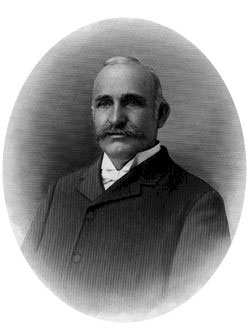
Ansel served Greenville County in the S.C. House of Representatives from 1882 until 1887. In 1888 Ansel was elected solicitor of the Eighth Judicial District, an office he held for thirteen years. In 1902 Ansel made an unsuccessful bid for the gubernatorial nomination in the Democratic Party primary. Although losing to Duncan C. Heyward, Ansel’s strong showing convinced supporters that he would be successful in a future election. In 1906 Ansel became the nominee for governor in the Democratic primary. He ran unopposed in the November general election and garnered 30,251 votes in that token contest. He was the first person of German ancestry to occupy the governor’s chair in South Carolina.
Inaugurated on January 15, 1907, Ansel held a first term that was most memorable for the abolishment of the controversial state liquor dispensary system by the General Assembly. Although a statewide ban on the sale of alcoholic beverages became law, counties were permitted to exercise the local “option” of retaining dispensaries. It was a notable victory for Ansel, who campaigned as a leading advocate of local option and personally favored prohibition. Ansel also pushed legislators to increase financial support to South Carolina’s public schools and place secondary schools under direct state supervision. Other developments during Ansel’s governorship included the founding of the Confederate Veterans’ Home in Columbia and the creation of the South Carolina Office of Public Health. In addition Ansel successfully urged the establishment of the State Department of Insurance. South Carolina voters approved of Ansel’s first term performance. In 1908 his reelection was without opposition in both the primary and general elections. By gaining 61,060 votes in the second contest, Ansel had nearly doubled his previous electoral mandate.
After retiring from office in January 1911, Ansel resumed his private legal practice in Greenville. In 1920 he was elected judge of the Greenville County Court, and he remained an influential figure in state politics until his death on August 23, 1945.
— Excerpted from an entry by Miles S. Richards. This entry may not have been updated since 2006. To read more about this or 2,000 other entries about South Carolina, check out The South Carolina Encyclopedia, published in 2006 by USC Press. (Information used by permission.)
ABOUT STATEHOUSE REPORT
Statehouse Report, founded in 2001 as a weekly legislative forecast that informs readers about what is going to happen in South Carolina politics and policy, is provided to you at no charge every Friday.
- Editor and publisher: Andy Brack, 843.670.3996
- Statehouse correspondent: Lindsay Street
More
- Mailing address: Send inquiries by mail to: P.O. Box 22261, Charleston, SC 29407
- Subscriptions are free: Click to subscribe.
- We hope you’ll keep receiving the great news and information from Statehouse Report, but if you need to unsubscribe, go to the bottom of the weekly email issue and follow the instructions.
- © 2019, Statehouse Report. All rights reserved.


